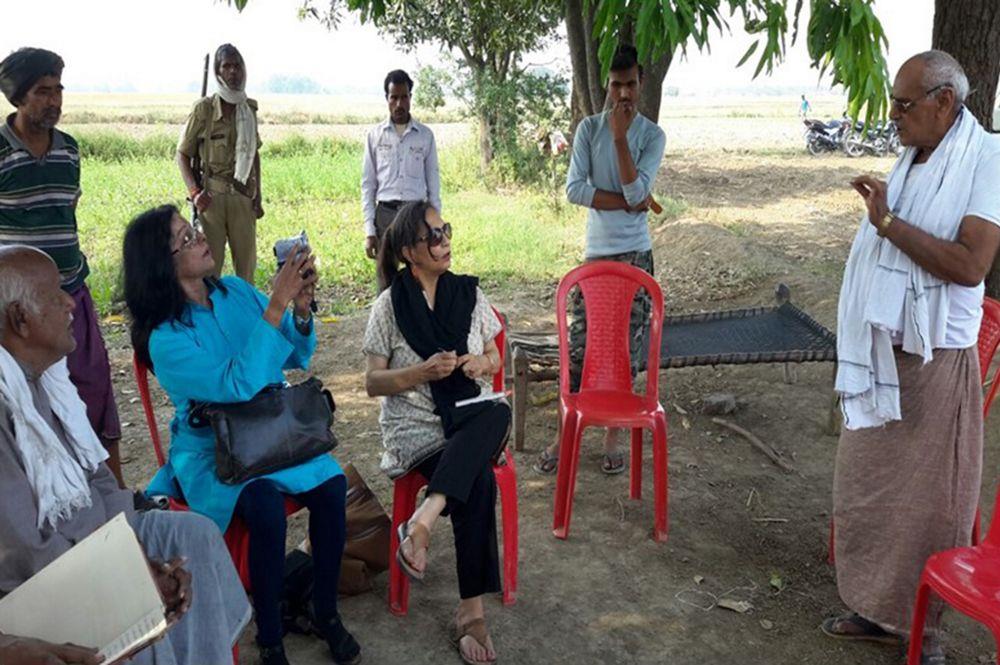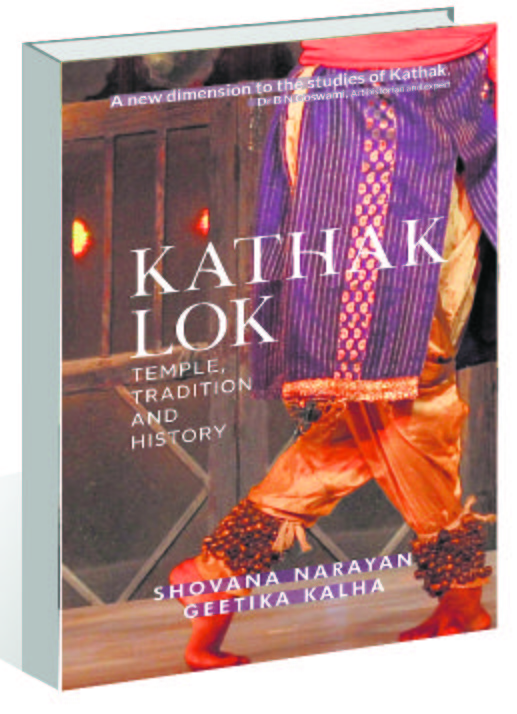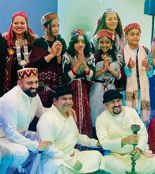Kathak Lok: Temple, Tradition and History by Shovana Narayan and Geetika Kalha. Vitasta. Pages 364. Rs 750
Book Title: Kathak Lok: Temple, Tradition and History
Author: Shovana Narayan and Geetika Kalha
Shailaja Khanna
The title of the book itself reveals the scope of the subject. Changing the title from ‘kathak log’ or people to ‘kathak lok’ or world, the authors have indicated the expansive breadth and range of the subject; how the art form encompassed not only ‘kathak’, the dance form. Interestingly, the term is also not confined merely to its practitioners.

A fascinating read, it reveals an unknown world, layer by layer. The book is written in the style of suspense fiction, each chapter opening up a new door, so to speak. ‘Kathak’ as a dance form has never been universally recognised for its antiquity. “In the field of dance, those dance styles that went first past the post, in imbuing themselves with roots in the haloed Natyashastra, were considered to be the oldest, most ancient…”
The original aim of writing the book, the authors say, “was not to refute or prove whether any state was the point of origin of Kathak dance… our mission was only to understand the existence of Kathak villages… why the existence of these villages was not common knowledge among dance historians and practitioners of Kathak dance”.
The book records the painstaking efforts of the authors to identify the UP and Bihar villages called ‘kathak’, checking whether the original inhabitants still lived there, why and when they left, where are they now... One discovers how patrons of the arts generously gave the artist community called ‘kathaks’ the wherewithal to withdraw into their art. However, unable to live without an audience, the community gradually abandoned their homes in search of new patrons. A close-knit community, they knew each other as family. If you asked any ‘kathak’ from east UP how many ‘kathaks’ there were, the answer was ‘nau sau nawasi’ (989). This is uncannily close to the official census of 1892: 988.
The book reflects the sad truth of the condition of our art forms today. “It was heart-breaking to see the end of a tradition. Here was a young man whose forefathers had prided themselves as practitioners of the Sama Veda, and whose father had performed in temples, but he now drove trucks in a bid to survive.”
The book traces the still extant tradition of ‘sewa’ in temples, where ‘kathaks’ originally performed before being diverted to courts and concert platforms. In Ayodhya, several temples still have a living tradition carried out daily; “actually seeing a ‘kathak’ doing ‘katha’ in a temple, explaining the message of the saints to the people is an experience like no other.”
Meticulously researched, the book quotes from Western sources as well as ancient Indian Puranas. It is sobering to note from all the research done that the aim behind this art form was ‘updesh’ — to instruct — not entertain. How distorted the view of the British was in decrying and denigrating this ancient art!
There are also fascinating anecdotes that reveal the prevalent, accepted hierarchy. How great thumri singers Gauhar Jaan and Zohrabai of Agra, and Sadabahar, the tawaif, also received training from doyens of ‘kathak’. Despite this, they were never considered equal to a ‘kathak’. At a private mehfil in 1967, the great queen of thumri, Sidheshwari Devi, performed excellent abhinaya to a thumri. When asked if she could be called a ‘kathak’, she said no, despite her training from a ‘kathak’, she could never be considered one herself.
The black and white plates and photographs are fascinating; only one wishes they were in colour and brought alive the visual experience. The book is a must-read for anyone interested in Indian art forms. Despite being an easy, almost compulsive read, it is relevant for the erudite, informed reader.














